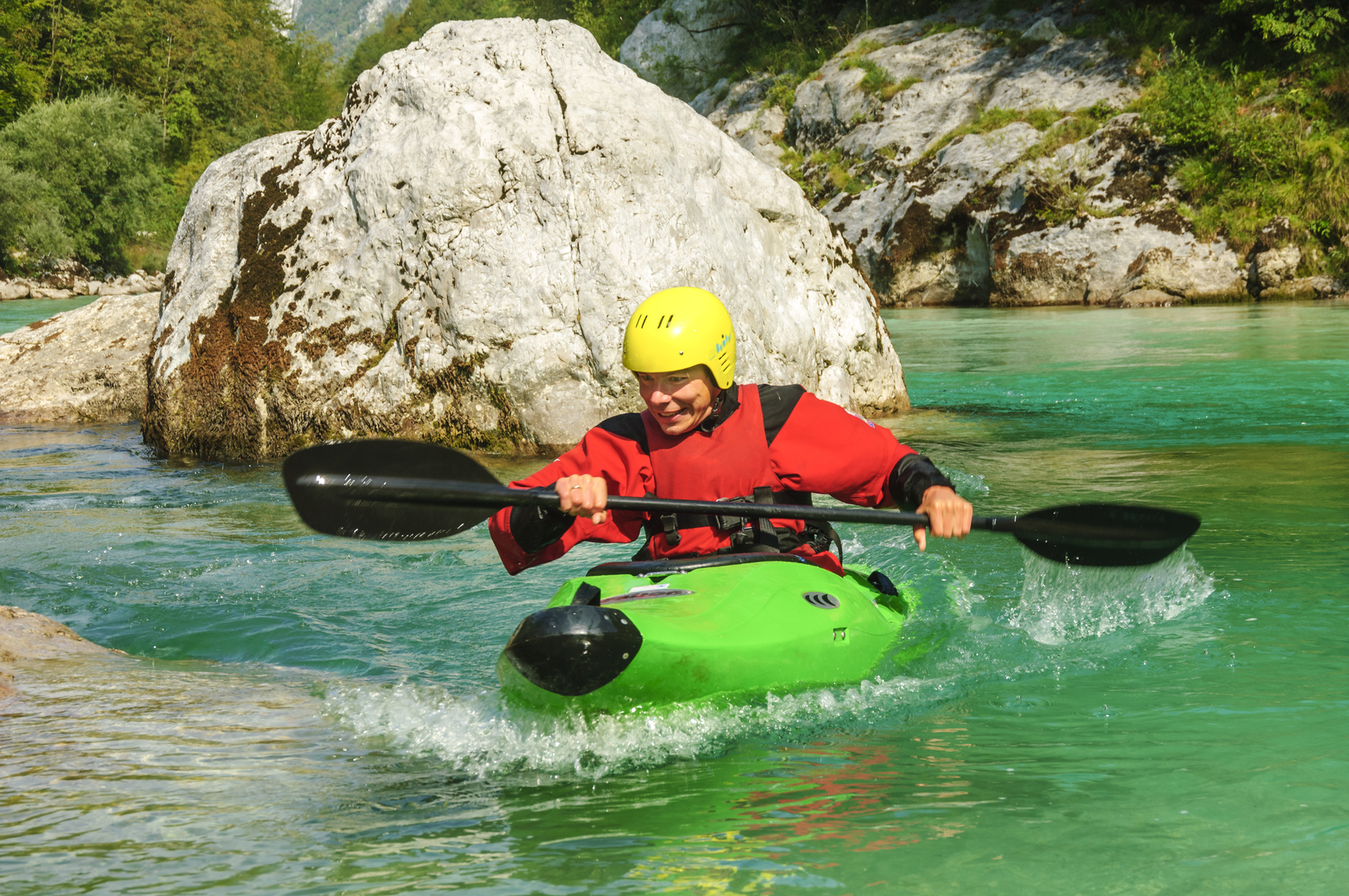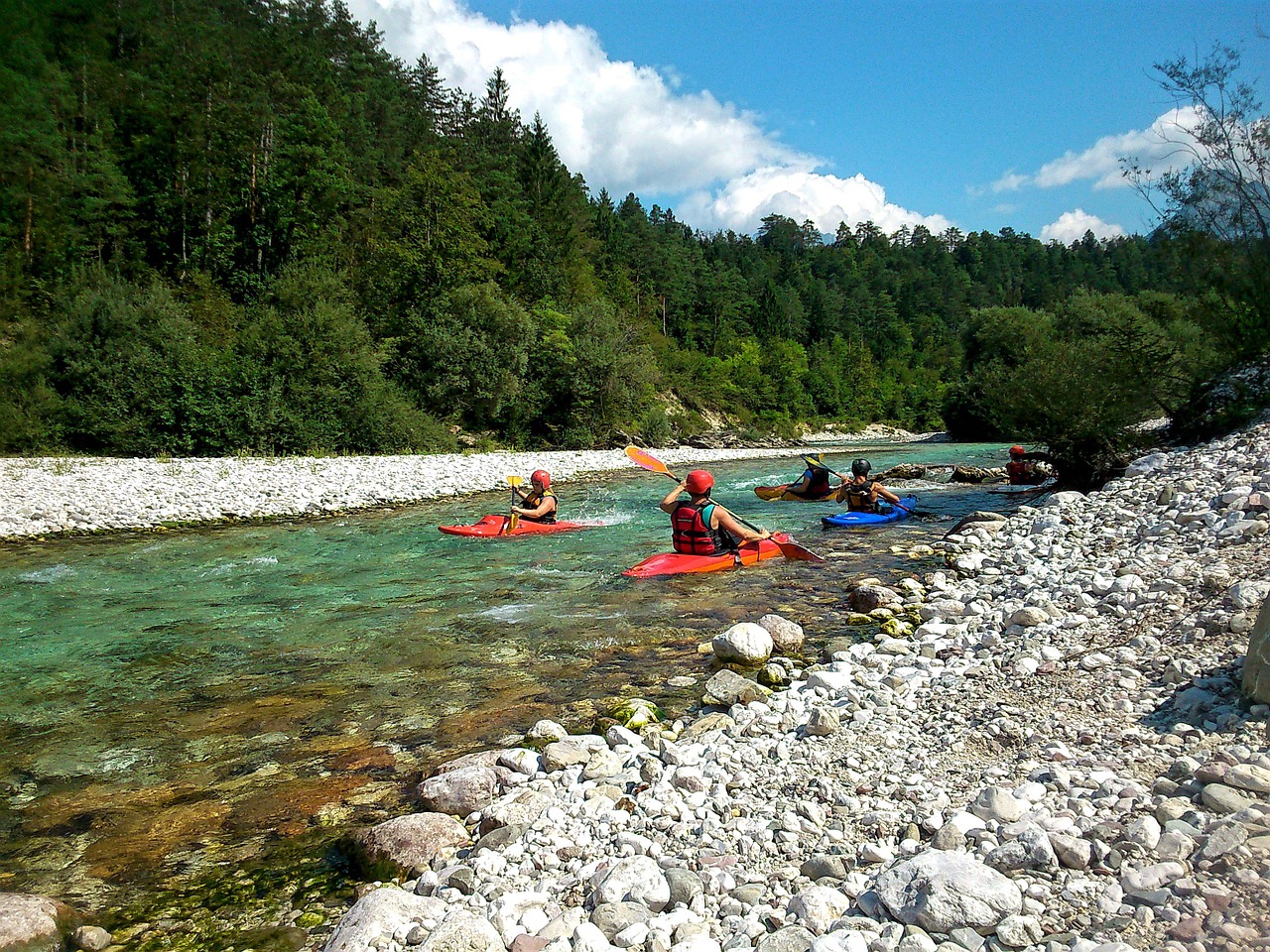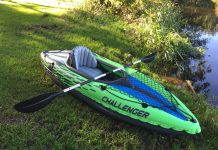
Many first time kayakers are surprised by things like how squirrelly a kayak can be or how easily they react to paddle input.
It’s important to recognize that kayaking as a sport can be quite a bit more complex than the weekend paddler might suspect. Gear, techniques, and safety are all subjects with much depth, especially when it comes to paddling streams and rivers.
In this article, we’re going to be taking a look at some of the more obscure (but helpful) river kayaking tips. Whether you’re just getting started paddling moving water or you’ve been actively paddling for years, we aim to provide a new perspective on equipment, training, and techniques.
There’s a lot more to safe and effective river kayaking than just these few tips, but they’ll get you started thinking!
14 Tips for Better River Kayaking
1. Get Educated
Call the local livery to see if they offer guided trips or get in touch with a kayak school for some beginner river kayaking lessons.

Consider signing up for a beginner river paddling course
Also, supplement your knowledge with technical kayaking manuals from the library and how-to videos from YouTube. A quick Google search will uncover heaps of free online resources to learn the basic techniques for river kayaking.
2. Up Your Game with Whitewater Training
Learning to paddle whitewater will make you a much more confident paddler. By the end of your course, you’ll be much more assured in your abilities and ready to tackle new challenges.
If you haven’t paddled whitewater before, be sure to go with a qualified instructor. Your friend may have been paddling whitewater for years, but that doesn’t mean he’s any good at teaching what he’s learned. Instructors have the teaching experience to ensure the knowledge sinks in and will drill the skills in a safe environment.
3. Learn to Read the Water
When beginners look at a river, they just see moving water. But with some training, you’ll be able to recognize changes in current from afar, submerged rocks and trees (strainers), and places where it’s safe to rest and regroup (eddies are usually a good spot).
It’s simple to avoid river hazards such as downstream and upstream V’s when you know what to look for. Reading the river should be part of any course you take on paddling. However, ongoing education (your responsibility) is critical to becoming a great river paddler.
4. Do Your Homework
You should always research the river thoroughly before your trip. Things like annual flow rate, campsites, and obstacles are critical to know.
Calling the local kayak livery may even get you some inside information! Check with the locals to see which river maps are the most helpful if you need extra navigation.
For flow rate and river information on most rivers, visit the USGS website.
5. Check Dam Release Times
You should know when dam releases are scheduled on rivers with active dams. If you’ve followed tip number four, then this isn’t going to be an issue for you.
If not, you may be in for a big surprise if the dam on your river releases when you’ve just stopped for lunch. Bye–bye, kayak.
If you’re a whitewater hunter, you may even want to plan your trip during a release time for increased flow rate.
6. Tag Along
If you’re paddling a river for the first time, go with a friend who has paddled the river before. Whether or not they’re an expert, you can at least rely on them for the inside scoop as you paddle.
Paddling with a partner is always recommended for safety, but keep the alcohol and beers out of the mixture. Stay safe out there!
7. Check the Weather Before You Go
It seems that as we become more skilled at traveling in the wilderness, checking the weather becomes forgotten in favor of other things. I’m often too distracted with my packing preparations and trip itinerary that I forget to check the weather! Bad move.
Remember to check for rainfall across the river catchment area. Heavy rain upstream can cause downstream rivers to swell rapidly.
8. Keep Your Wits About You
Being surrounded by beautiful scenery and wildlife make it too easy for paddlers to fall into a lull. Yes, enjoy the beauty of nature, but don’t forget you’re in a boat!
The hazards of boating are always present.
Even when paddling on flat stretches of river, it’s all too easy to get caught up in a strainer when not paying attention.
9. Scout Before You Paddle

Scouting will alert you to the dangers that lie ahead
If the going gets rough, try scouting ahead. Pull up on the bank and walk the shore to check for obstacles ahead and that any rapids are within your capabilities. Learning to scout properly is a skill in and of its self, so be sure to read through this guide on whitewater scouting and preparation.
10. Keep Your Paddle Busy
A good habit to get into is constantly making fine adjustments to correct course. You should always keep your paddle actively propelling and steering, even if minutely.
Even on easier stretches, it’s important to keep yourself under control at all times, so you don’t have to make emergency recovery moves last minute.
11. Practice Ferry Gliding
Ferry Gliding is a skill useful in whitewater paddling and recreational boating which will increase your control over the river. Perfecting ferry gliding will allow you to move across the river without being carried downstream.
Among many advanced skills used in river kayaking, ferry gliding is crucial as it helps you control the pace of your paddling and position on the river.
12. Enroll in a Swift Water Rescue Course
If you want to make friends on the river, having your cert will most definitely put them in your pocket. Nothing is quite as endearing as knowing someone has your back out there on the river.
Learning water rescue procedures could save your life or someone's in your group!
13. Use the There and Back Method
This one’s good for newbies who are still building their paddling muscles. The “there and back method” sees you paddle upstream for an hour (or until tired), and then use the rivers flow to enjoy a less strenuous journey back when you’re knackered.
14. Bring Spare Clothes
And last but not least: don’t forget to leave an extra set of clothes at the take-out.
It can be miserable driving home in soggy clothes – especially when the weather is cool, and the drive may be an hour or more. Being greeted with a clean and dry outfit will leave you with pleasant memories of the whole trip.
Conclusion
We hope you’ve enjoyed our river kayaking tips. We hope we’ve assembled enough easily overlooked tips and tricks to help you get focused on your next river kayaking trip. We encourage you to seek mentors, friends, tutors, and guides to learn all you can!
Whitewater and river paddling includes many dangers. Always paddle with a guide when learning, and never paddle alone. While much can be learned from articles and videos, nothing can replace real world training. So, get out there and get paddling.
Do you have a favorite tip or trick for river kayaking that you feel is often overlooked? Did we leave out a glaringly helpful tip? Let us know in the comments below.
As an Amazon Associate, we earn from qualifying purchases. This is without any additional costs for the buyer but does support us in maintaining our website.



